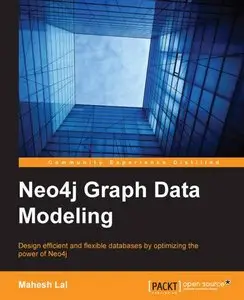Neo4j Graph Data Modeling by Mahesh Lal
English | 19 Jun. 2015 | ISBN: 1784393444 | 138 Pages | EPUB/MOBI/PDF (True) | 24.19 MB
With: Code Files
English | 19 Jun. 2015 | ISBN: 1784393444 | 138 Pages | EPUB/MOBI/PDF (True) | 24.19 MB
With: Code Files
If you are a developer who wants to understand the fundamentals of modeling data in Neo4j and how it can be used to model full-fledged applications, then this book is for you. Some understanding of domain modeling may be advantageous but is not essential.
Design efficient and flexible databases by optimizing the power of Neo4j
About This Book
Model your data as a graph using Neo4j to design databases with minimum hassle
Discover new patterns using graphs and solve problems that are difficult to solve using any other database
Step-by-step guide to designing a graph model with pitfalls and design choices
What You Will Learn
Translate a problem domain from a whiteboard to your database
Make design decisions based on the nature of data and how it is going to be used
Use Cypher to create and query data
Evolve your database in stages
Optimize the performance of your application with data design
Design paradigms to ensure flexibility, ease of querying, and performance
Move from an existing model to a new model without losing consistency
In Detail
Neo4j is a graph database that allows you to model your data as a graph and find solutions to complex real-world problems that are difficult to solve using any other type of database.
This book is designed to help you understand the intricacies of modeling a graph for any domain.
The book starts with an example of a graph problem and then introduces you to modeling non-graph problems using Neo4j. Concepts such as the evolution of your database, chains, access control, and recommendations are addressed, along with examples and are modeled in a graph. Throughout the book, you will discover design choices and trade-offs, and understand how and when to use them. By the end of the book, you will be able to effectively use Neo4j to model your database for efficiency and flexibility.



